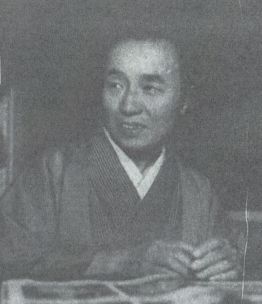Oku Mumeo facts for kids
Quick facts for kids
Mumeo Oku
|
|
|---|---|

Mumeo Oku in 1953
|
|
| Born | October 24, 1895 Fukui, Japan |
| Died | July 7, 1997 (aged 101) Tokyo, Japan |
| Occupation | Politician |
| Citizenship | Japanese |
| Spouse | Eiichi Oku |
| Children | Kyoichi Oku Kii Nakamura |
Mumeo Oku (奥 むめお, Oku Mumeo, October 24, 1895 – July 7, 1997) was a very important Japanese woman. She was a politician and a leader who fought for women's rights. She helped women get the right to vote and played a big part in helping regular people with their daily needs.
Mumeo Oku was a famous activist in the 1920s. She helped start the New Women's Association with Hiratsuka Raichō and Ichikawa Fusae. Later, she became a member of Japan's parliament, called the House of Councilors. She served there from 1947 until she retired in 1965.
Contents
Mumeo Oku's Life
Early Life and Education
Mumeo Oku was born on October 24, 1895, in Fukui, Japan. She was the oldest daughter in her family. Her father was a blacksmith, but he wanted Mumeo to get a good education.
She went to Japan Women's University in 1912 to continue her studies. Sadly, her mother passed away when Mumeo was young. Her father also died when she was in her early twenties.
Fighting for Women's Rights
In 1919, Mumeo Oku met Hiratsuka Raichō. They decided to create a new group called the New Women's Association. Their goal was to change a law called Article 5 of the Police Safety Regulations. This law limited what women could do in politics.
After some challenges, Mumeo Oku became the main leader of the New Women's Association. Finally, on March 25, 1922, she and her group succeeded! Article 5 was changed, which was a big win for women's rights in Japan.
Helping Consumers and Families
After the New Women's Association achieved its goal, Mumeo Oku started a new group called the Women's League. She became very well-known for her work helping women.
In 1926, she moved to Nakano, Tokyo, to help with a movement to protect consumers. This meant working to make sure people got fair prices and good quality for the things they bought. This work became very important to her.
Mumeo Oku also led or was involved in many other groups. These included the Association of Households and the Cooperative Women's Consumer Union. She also helped start "women's settlements," which were places to support women and families in their communities.
Family Life
Mumeo Oku was married to a poet named Oku Eiichi. They had two children, a son named Kyoichi Oku and a daughter named Kii Nakamura.
Her daughter, Kii Nakamura, followed in her mother's footsteps. She also became a leader, serving as the chairman of the Housewives' Association, just like her mother had.
Her Legacy
Mumeo Oku lived a very long life, passing away on July 7, 1997, at 101 years old. She made many important contributions to modern Japan.
Because of her hard work, Japanese women can now run for public office and hold important positions in government. Her Housewives' Association also helped improve the daily lives of many people across Japan.
See also
 In Spanish: Oku Mumeo para niños
In Spanish: Oku Mumeo para niños

